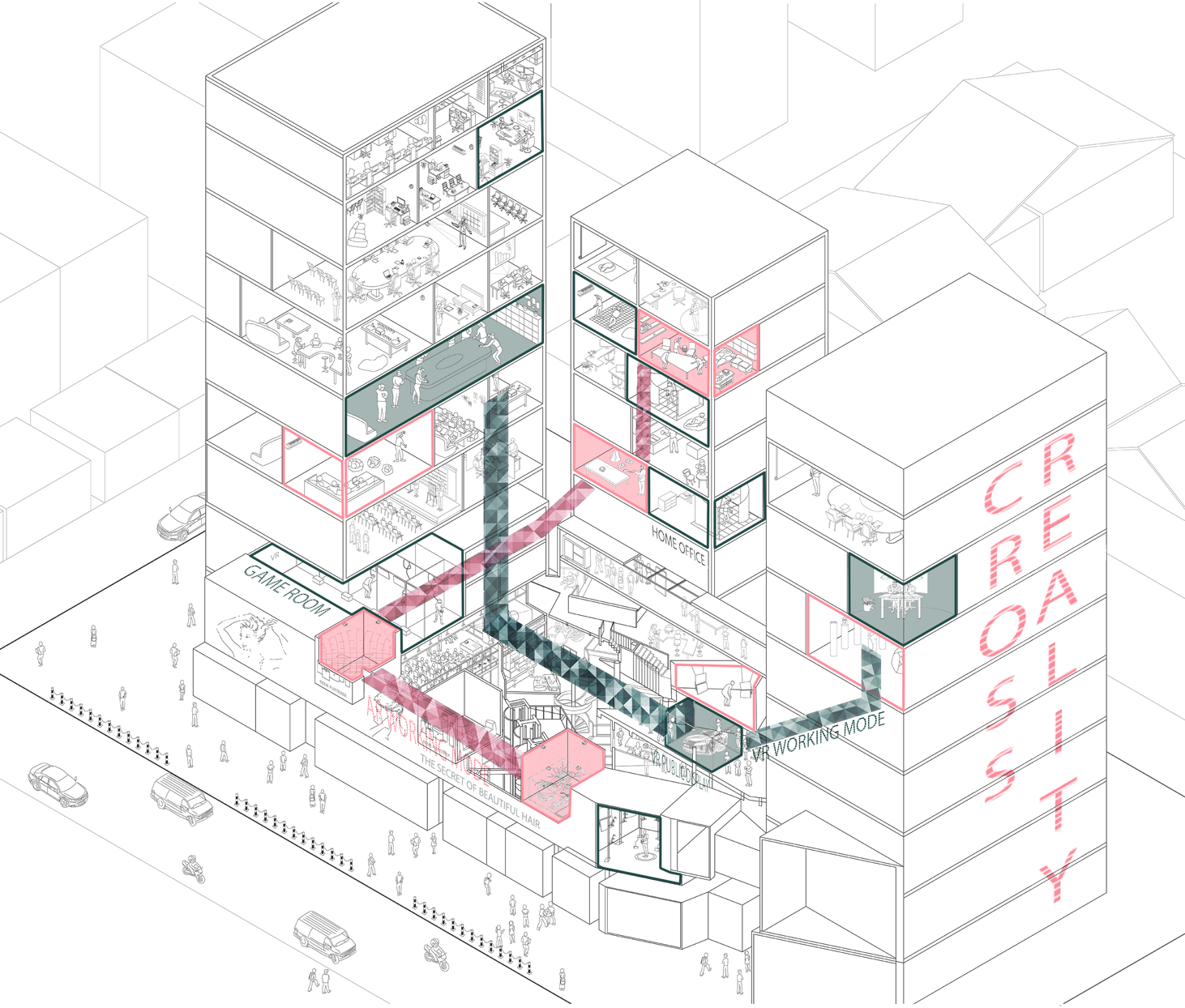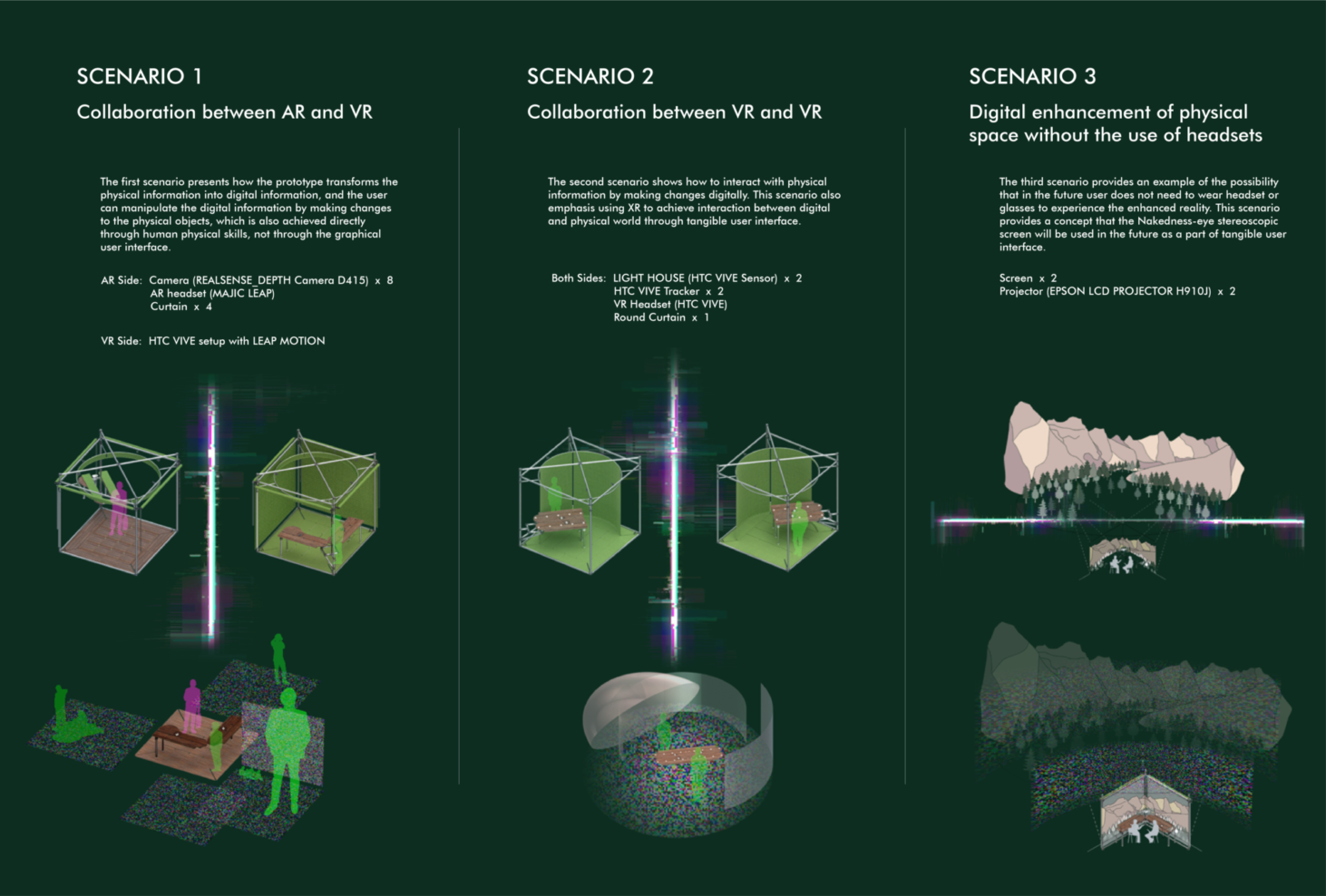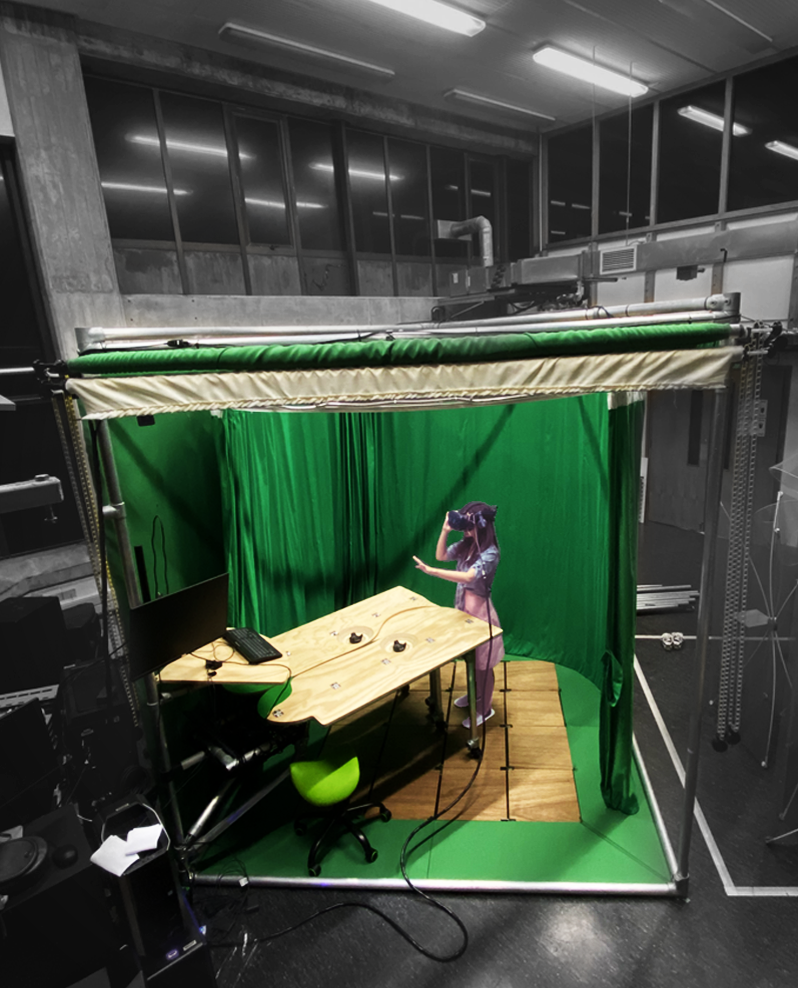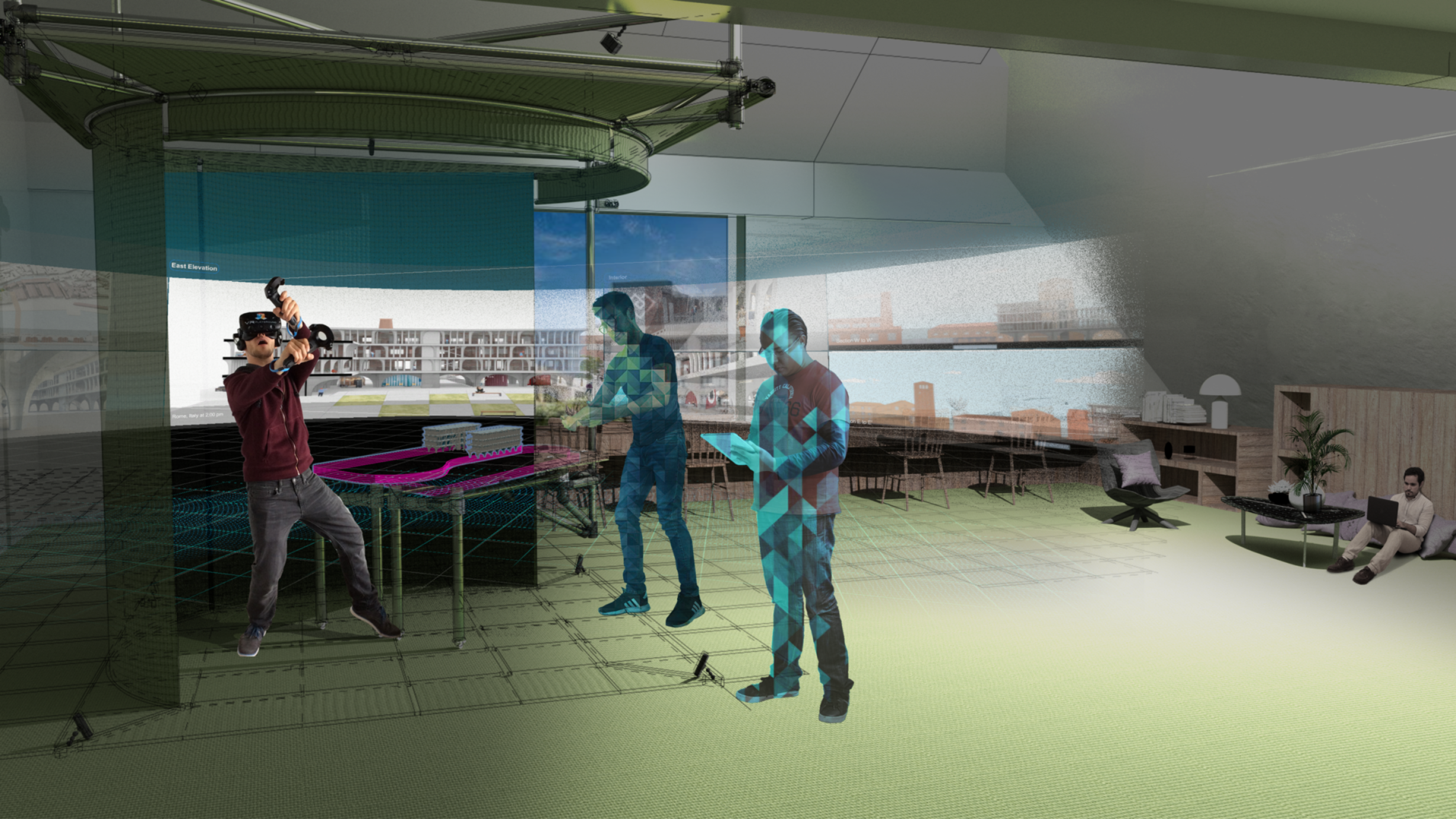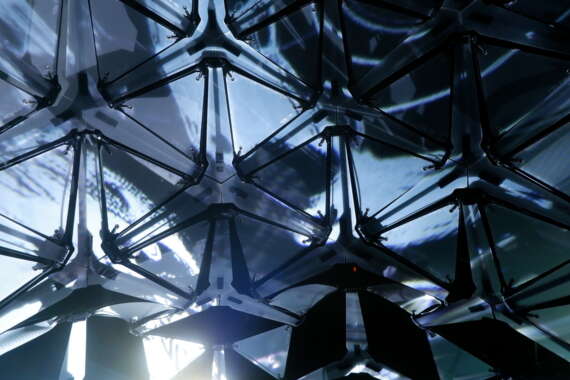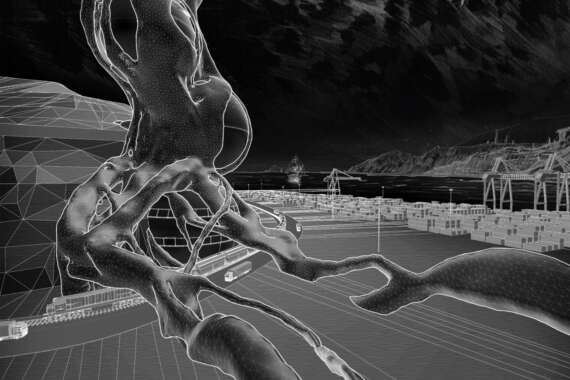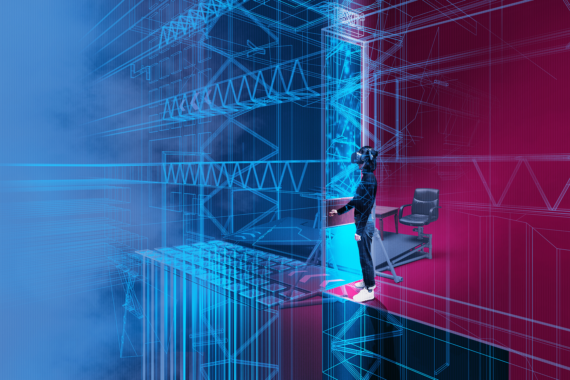Hybrid Home Office
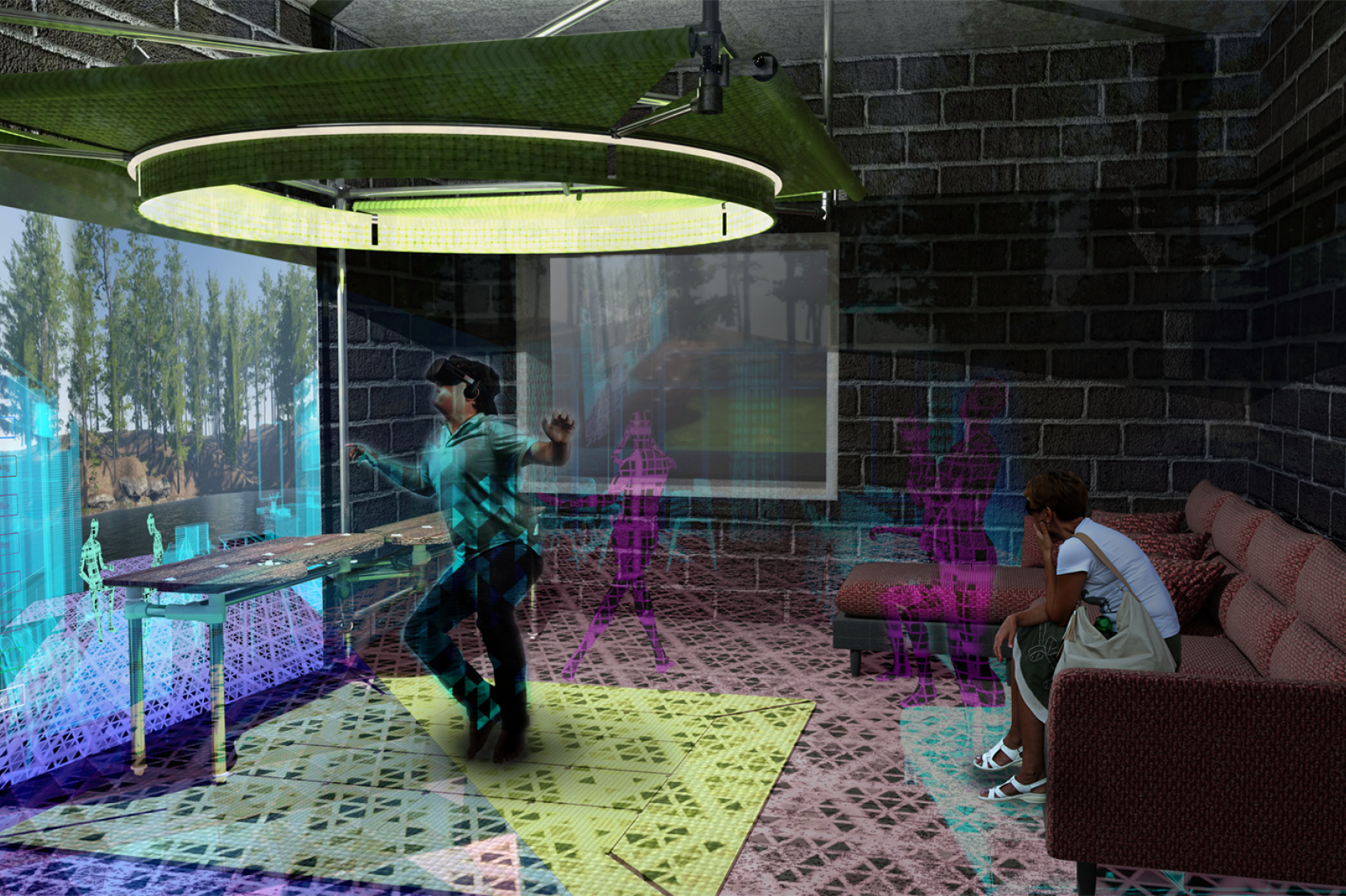
Cross Reality (XR) is a fusion of cyber-information and physical constructions which are interactively linked through a sensory interface. An ideal home office prototype using XR technology allows users to stay at home and communicate with team workers through a tangible and seamless interface, collaborate remotely with partners and share ideas in a joint meeting while in different places.
In the home office, the occupants operate in a hybrid form of reality by bringing digital content into the physical world and physical behaviours and materiality into the digital world. The digital information and sensors, as architectural elements, embed XR into architecture design and show a future workspace where digital bits become tangible.








